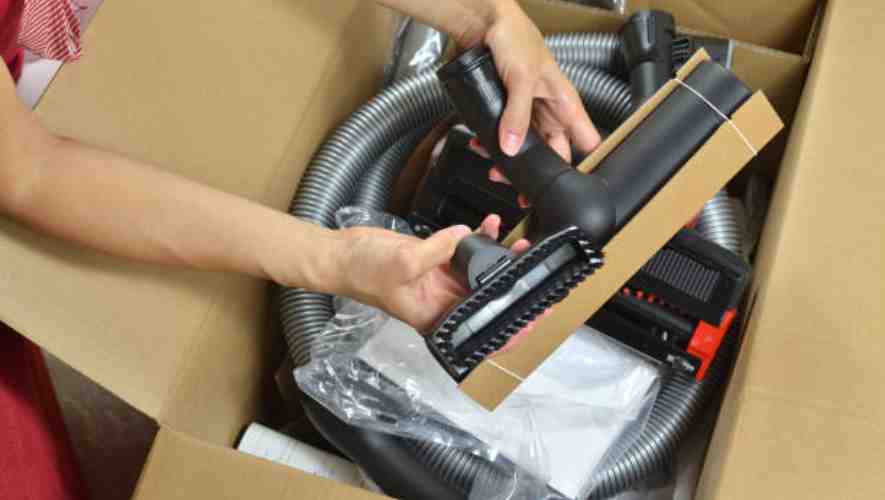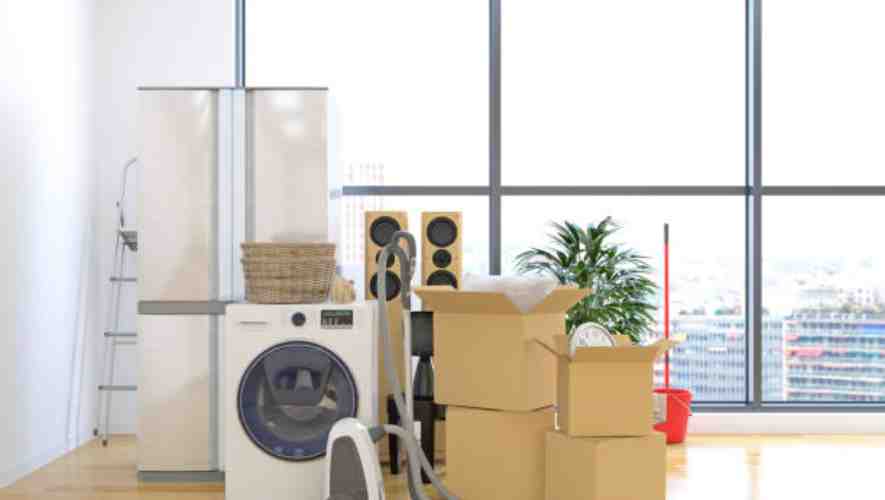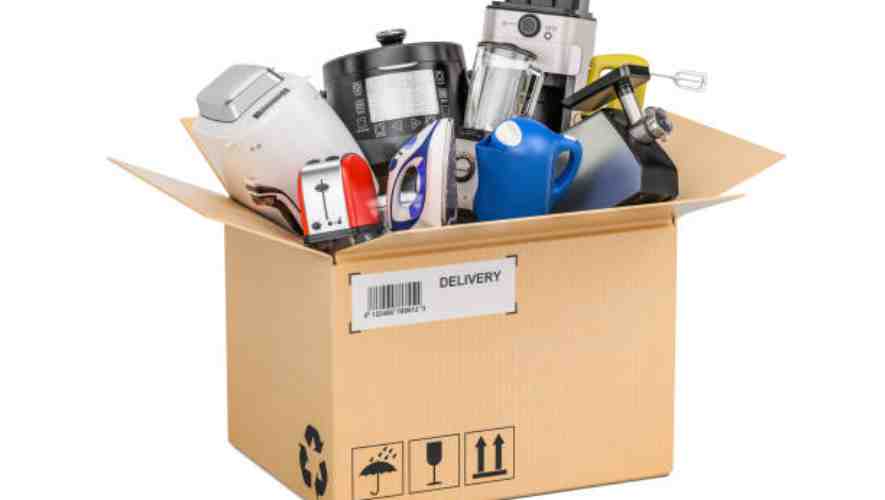Moving homes can be an exhilarating journey, a fresh start that opens the door to new possibilities. However, it’s often the logistics of moving that can dampen the excitement, especially when it comes to packing small appliances. These items are not only essential to our daily routines but also prone to damage if not handled correctly. Whether it’s the coffee maker that kick starts your day or the blender that fuels your fitness regime, ensuring these small yet significant items make it to your new home in one piece is crucial.
How to Pack Small Appliances for Moving? To pack small appliances for moving, first clean and dry them. Remove detachable parts, securing them separately. Wrap the appliance in bubble wrap, placing it in a box with ample cushioning material. Fill gaps with packing peanuts or crumpled paper to prevent movement during transit.
The excitement of moving into a new home brings with it the daunting task of packing, a process often underestimated until faced with the challenge of packing small, delicate appliances. This blog will guide you through the essential steps and tips to pack your small appliances safely and efficiently, making sure they arrive at your destination just as they left: intact and ready to use. You’ll learn how to prepare, wrap, and box your appliances in a way that minimises risk and maximises space. Plus, we’ll share some insider packing hacks that will make the process smoother and faster. So, let’s get started and turn what could be a packing ordeal into a stress-free task!
Secure Wrapping Techniques Small Appliances for Moving

When preparing small appliances for a move, secure wrapping techniques are essential to protect them from damage. Begin by cleaning each appliance thoroughly to prevent dust and debris from causing scratches during transport.
Use bubble wrap or soft packing paper as the first layer of protection, ensuring that every surface is covered. Secure the wrap with packing tape, but avoid placing the tape directly on the appliance’s surface to prevent residue.
Finally, place the wrapped appliances in sturdy boxes that fit their sizes closely, filling any gaps with additional packing material to prevent movement.
Detaching Removable Parts
Detaching removable parts is a crucial step in preparing small appliances for moving. This process reduces the risk of losing individual components and helps avoid damage caused by parts shifting or snagging during transit.
Start by consulting the appliance’s manual to identify all detachable parts correctly. Once identified, carefully remove these components, wrap them separately, and label them clearly to ensure easy reassembly at your destination. This approach not only simplifies packing but also enhances the overall protection of your appliances.
Wrapping Individual Components
Wrapping individual components of small appliances requires attention to detail to ensure maximum protection.
After detaching removable parts, wrap each one separately in bubble wrap or packing paper, paying extra attention to fragile items like glass carafes or sharp blades.
Secure the wrapping with tape, ensuring that it doesn’t stick to the components themselves. For optimal organisation, place these wrapped items in a labelled bag or box related to their respective appliance.
This methodical approach minimises the risk of damage and loss, facilitating a smoother unpacking process.
Packing Appliances into Boxes

When it comes to packing appliances, selecting the appropriate materials and employing the correct techniques are essential steps to prevent damage during transit.
Start by gathering all necessary packing supplies, including sturdy boxes, bubble wrap, packing paper, and strong adhesive tape. It’s vital to clean and dry each appliance thoroughly before packing to avoid the risk of mould or unpleasant odours.
For appliances with detachable parts, disassemble these components and pack them separately, clearly marking each item to facilitate easy reassembly upon unpacking.
Choosing the Right Box Size
The key to preventing damage to appliances during a move lies in choosing the right box size. A box that is too small can lead to pressure and damage to the appliance, while a box that is too large allows for unnecessary movement and potential harm.
Measure your appliances and opt for boxes that offer a snug fit, allowing just enough room for protective padding.
Specialty boxes designed for electronic items can offer additional protection with built-in cushioning, making them a worthy investment for high-value appliances.
Layering and Cushioning
Effective layering and cushioning are paramount in protecting your appliances. Begin by lining the bottom of the box with a thick layer of bubble wrap or crumpled packing paper to absorb shocks.
Wrap each appliance individually with bubble wrap, securing the material with tape. For extra protection, fill any gaps within the box with additional crumpled paper or foam peanuts to prevent the items from shifting during transport.
This method ensures a snug and secure fit, significantly reducing the risk of damage.
Placing Appliances in Boxes
When placing appliances into boxes, it’s crucial to do so with care and strategy. Heavier items should be placed at the bottom of the box, with lighter items on top. This prevents heavier appliances from damaging smaller, more delicate ones.
If packing multiple appliances in one box, ensure that each item is individually wrapped and separated by cushioning materials to avoid direct contact. Pay special attention to fragile parts, such as glass panels or buttons, ensuring they are well-protected and secure.
Final Sealing and Labelling
The final step in the packing process involves securely sealing the boxes and properly labelling them. Use heavy-duty packing tape to seal the top and bottom seams of the box, applying additional strips across the edges for enhanced security.
Clearly label each box with its contents and the room it belongs to, using a permanent marker. Consider adding “Fragile” or “Handle with Care” labels to alert movers to the delicate nature of the box’s contents.
Proper labelling not only aids in the careful handling of your appliances but also streamlines the unpacking process at your new destination.
Tips for Transport and Unpacking for moving

When planning a move, efficient transport and unpacking strategies can greatly reduce stress and ensure a smooth transition. Begin by carefully labelling all boxes with their contents and intended room destination.
This not only streamlines the unpacking process but also helps with organising the transport. Utilise sturdy, size-appropriate boxes for items, and don’t overload them.
Upon arrival, prioritise unpacking essentials such as bedding, toiletries, and kitchen items to quickly make your new space functional.
Loading Appliances for Transport
Transporting appliances requires special attention to prevent damage. Firstly, ensure that all appliances are clean and dry to avoid mould and unpleasant odours.
Secure any moving parts, such as the drum of a washing machine, with manufacturer-recommended shipping bolts or similar stabilisers. Use appliance dolls and straps for safe handling, and ensure that each appliance is upright and well-protected by blankets or padding.
When loading into a vehicle, position appliances against the walls to minimise movement during transport.
Climate Considerations
Climate can significantly impact the moving process, particularly when transporting sensitive items. Extreme temperatures can damage electronics, wood, and other materials, so consider the weather forecast for your moving day.
If moving in hot or cold conditions, use climate-controlled storage units for temperature-sensitive items.
Furthermore, protect your belongings from moisture with waterproof covers and ensure that any climate-sensitive items are quickly moved into a stable environment at your new location.
Unpacking and Setting Up
Unpacking and setting up in your new home can be overwhelming, but a systematic approach can facilitate a smoother process. Start by placing furniture in their designated spots, as this will help define the space and make unpacking less chaotic.
Then, unpack room by room, starting with the kitchen and bedrooms, as these are essential for daily living.
As you unpack, take the opportunity to declutter, getting rid of items that no longer serve you. This not only helps with organisation but also makes your new space more inviting and manageable.
Conclusion
Packing small appliances doesn’t have to be a source of stress during your move. With the right approach and materials, you can ensure they’re protected and ready to be part of your new beginning. Remember, the key is in the preparation: clean, dry, wrap, cushion, and label your appliances for a move that’s as smooth as your morning coffee.
Beyond the practical steps, consider this an opportunity to reevaluate your belongings. Moving is a perfect time to declutter and decide which appliances truly add value to your life. Donate or sell the ones you no longer need and make room for new experiences and gadgets that match your current lifestyle and aspirations. In the end, packing with care and intention not only secures your appliances but also sets the stage for a fresh, organised start in your new home.
Frequently Asked Question(How to Pack Small Appliances for Moving)
What is the best way to pack appliances for moving?
The best way to pack appliances for moving is to clean and dry them first, then secure movable parts with tape. Use original boxes where possible, or sturdy boxes with plenty of padding from bubble wrap or packing paper to prevent movement and damage during transit.
How do I protect my appliances when moving?
To protect your appliances when moving, clean and dry them first, then secure movable parts with tape. Wrap them in bubble wrap or moving blankets for cushioning, and place them in their original boxes or sturdy moving boxes. Label the boxes clearly to handle with care.
How do you pack small items?
To pack small items, use bubble wrap or packing paper for protection, place them in small boxes, and fill empty spaces with cushioning material. Clearly label each box with its contents and “Fragile” if necessary to ensure careful handling.
How do you pack a blender for moving?
To pack a blender for moving, first clean and dry all parts. Wrap the glass jar and other fragile components in bubble wrap or packing paper. Secure the base and blades separately, ensuring sharp edges are covered. Place all items in a sturdy box, filling gaps with padding to prevent movement.


